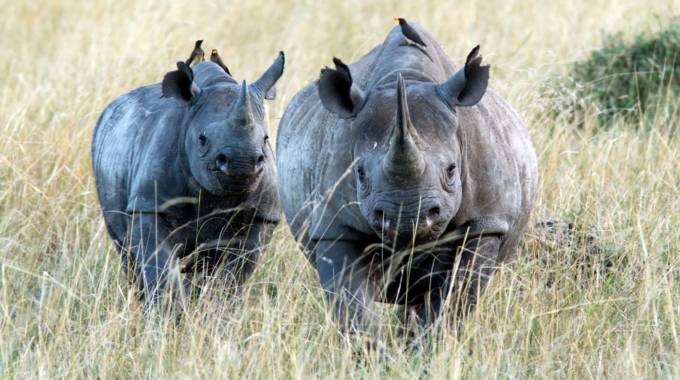
The Sunday Mail

ZIMBABWE will soon reintroduce black rhinos into the country’s second largest national park — Gonarezhou.
The park is managed by the Zimbabwe Parks and Wildlife Management Authority (ZimParks) in partnership with Frankfurt Zoological Society under what is known as the Gonarezhou Conservation Trust (GCT) since 1 March 2017.
Zimbabwe has the fourth largest rhino population in Africa after South Africa, Kenya and Namibia.
This will be the third time that black rhinos will be introduced into the park after the last of the original black rhino population in Gonarezhou was poached into extinction in the 1930’s and 1940’s.
Between 1969 and 1977, 77 black rhinos from the Zambezi valley were brought back into the park.
The black rhino population grew to about 140 in the 1980s, before the civil war in neighbouring Mozambique led to the park being closed to the public.
However, a wave of rhino poaching that swept across the continent in the early 1980’s did not spare the iconic Gonarezhou.
In 1994, the last black rhino was poached resulting in the second local extinction of the species in the park.
Black rhinos are regarded as a critically endangered species by the International Union for Conservation of Nature (IUCN) and are specially protected in the country under the Parks and Wildlife Act.
“Their numbers have declined drastically since the 1970’s and existing populations are under pressure from poaching, lack of genetic diversity, habitat destruction and the cost of protection,” says GCT director, Mr Hugo van der Westhuizen.
Currently, there is a limited number of black rhinos in national parks countrywide.
Most of the rhinos are in private conservancies, under private care through a Government-led initiative to save the rhino from extinction.
As a result, the country draws immense pride from reintroducing a new viable population in a national park.
Culturally, black rhinos are a significant symbol of power, pride, and trust for the Shangaan people.
Needless-to-say, they are a major draw for tourists.
“Rhinos are a major tourism draw card, being a critically endangered species, and the only one of the big five which was absent in Gonarezhou.
“The reintroduction will help raise the profile of the park as not only a successful conservation story but as a responsible tourism destination,” said Zimparks director general, Dr Fulton Upenyu Mangwanya.
Added Mr Hugo: “Rhinos are ecologically important mega-herbivores that were poached out of the Gonarezhou ecosystem 27 years ago.
“Reintroducing them to the landscape and restoring part of the biodiversity of the park is an important milestone in the conservation and restoration of the ecosystem.
“Gonarezhou has lost its rhino population twice to poaching and other national parks like Kruger National Park in South Africa are under immense pressure from poaching.
“However, we have prepared our team through constant refresher courses and equipping them with necessary gear, as well as recruiting additional rangers for reinforcements. GCT will make use of technology to monitor the rhinos constantly.”
Managing risks
While experienced veterinary and capture teams undertake the capture of the beasts, there remains a risk to individual animals from the darting, their response to capture drugs, transportation and acclimatisation in the holding pens.
Over the last month, the country’s wildlife conservation story has elicited rave reviews from the global press and in turn this has generated national and international interest in the reintroduction programme. Reintroduction of the black rhinos will, without a doubt, raise the profile of the park and the country as well as the plight of black rhinos in the world.
The reintroduction is guided by international best practice, including the IUCN Rhino Specialist Group Guidelines.
In addition, there are ongoing engagements with experts in the field to ensure that all procedures are up to date and maximise the safety of both the animals and the experts involved.
The GCT has undertaken two ecological feasibility studies ahead of commencement of the reintroduction process.
Further, GCT partnered with some of the most experienced veterinarians, ecologists and animal handlers to limit any risks as far as possible. The translocation is being done this winter when temperatures are cooler and there is limited risk to animals during capture and translocation.
Considering that the country experienced extremely good rainfall last season, food is abundant in the park.
Training of rangers is a cornerstone in the protection of the animals.
Over the years there has been a continuous training exercise.
Experienced and professional capture and relocation teams are in place to guarantee success of the project.
In conclusion, Zimbabwe takes pride in the conservation of all wildlife and management of habitats for the benefit of current and future generations in partnership with stakeholders.
Tinashe Farawo is the head of communications at Zimparks. He can be contacted at [email protected]



